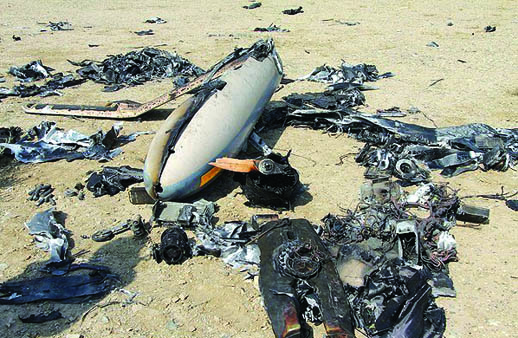September 12-14

The system in the Islamic Republic has turned silent about the Israeli drone it says was shot down near Natanz last month. But it didn’t turn silent until releasing information on the shootdown that was internally inconsistent and means its story cannot be entirely true.
Most attention, however, has focused on where the drone was launched from.
A few days after the announcement of the drone’s downing was made, military officials said the drone did not fly from Israel but had been launched from one of the former Soviet republics to Iran’s north. Azerbaijan, Armenia and Turkmenistan are the former Soviet republics that border Iran. Azerbaijan is known to have bought about 10 Israeli Hermes drones, the kind that Iran says it shot down.
But officialdom has turned silent. The regime is no longer flogging the issue and using it to denounce Israel.
One rare voice heard on the issue was Majlis Deputy Mansur Haqiqatpur, who called on the military to publicly identify that country from which the drone was flown.
While the unquestioned assumption is that Israel had help from one of Iran’s neighbors, it is also possible that Azerbaijan was spying on Iran or that one of its drones—chiefly used to spy on Armenian forces occupying parts of western Azerbaijan for 20 years—went astray. Azerbaijan has not claimed to have lost any of its drones, however.
Officials of the Islamic Republic have often complained that Azerbaijan helps Israel, mainly because Azerbaijan buys weapons from Israel.
Iran says it shot the drone down August 23 near Natanz, where Iran’s main uranium enrichment plant is located. But since August 29, apart from Haqiqatpur’s remarks, the Iran Times has not seen any stories about the drone in the Iranian media, a rather strange silence.
The last word on the drone August 29 came from Brig. Gen. Farzad Esmaili, the commander of Iran’s Air Defense Force, the country’s fourth regular military force after the Army, Navy and Air Force.
Esmaili’s Air Defense Force is in charge of air defense, but it was the Pasdaran that claimed to have shot down the drone and that talked about it for a week.
Esmaili finally spoke out and said it was his force’s radar that detected, identified and tracked the Israeli drone for 41 minutes until it was shot down by a single Pasdar missile at an altitude of 3,700 meters (11,000 feet).
Esmaili said his forces initially tried to hack into the drone and land it intact, but were unable to do that.
There are, however, internal inconsistencies in the Islamic Republic’s claims. Esmaili said the drone was tracked for 41 minutes. The maximum speed of the Hermes is 176 kilometers per hour. (Its cruising speed is just 130 kph.) At its maximum speed, the Hermes would cover 120 kilometers in 41 minutes; Tehran is that distance from the closest point on the Caspian. Natanz, near which the regime said the drone was downed, is 330 kilometers from the closest point on the Caspian.
If the drone really flew over Iran for 41 minutes, it would not have been anywhere near Natanz after 41 minutes. And if it were shot down near Natanz, it would have to have flown much longer over Iran than 41 minutes.






















